
Geoplaninae is a subfamily of land planarians endemic to the Neotropical region. Members of this family are sometimes referred to as the Neotropical land planarians. However, one species, Obama nungara has been introduced in Europe.
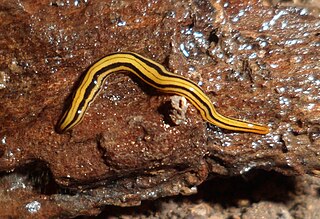
Luteostriata is a genus of land planarians from Brazil characterized by a yellow body with dark longitudinal stripes.

Obama is a genus of land planarians from South America. It contains several species adapted to human-disturbed environments, including the only invasive land planarian native to the Neotropical realm, Obama nungara, which has been accidentally introduced in Europe.

The reproductive system of planarians is broadly similar among different families, although the associated structures can vary in complexity.
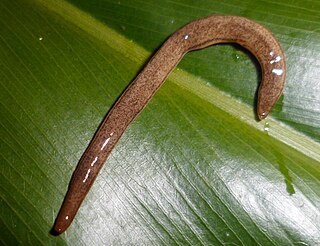
Supramontana is a genus of land planarians from South America.
Geoplana is a genus of land planarians from South America.

Pasipha is a genus of land planarians from South America.
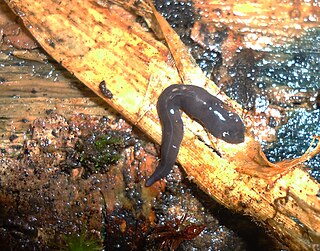
Notogynaphallia is a genus of land planarians from South America.

Barreirana is a genus of land planarians from Brazil, formerly considered a subgenus of Geoplana.
Eudóxia Maria Froehlich was a Brazilian zoologist.

Amaga is a genus of land planarians from South America.

Luteostriata abundans is a species of Brazilian land planarian in the subfamily Geoplaninae. It is a common species in human-disturbed areas in Brazil's southernmost state, Rio Grande do Sul.
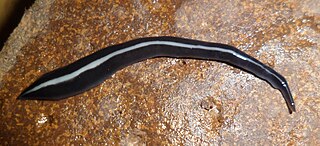
Paraba franciscana is a species of land planarian found in Brazil.

Luteostriata ernesti is a species of Brazilian land planarian in the subfamily Geoplaninae.
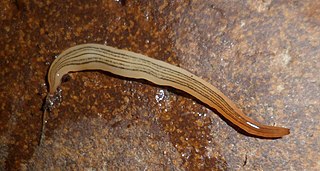
Luteostriata ceciliae is a species of Brazilian land planarian in the subfamily Geoplaninae.

Supramontana irritata is a species of Brazilian land planarian in the subfamily Geoplaninae. It is the type species of the genus Supramontana.
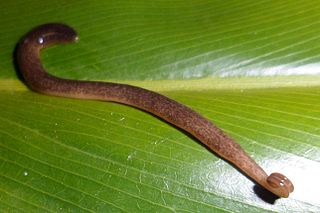
Choeradoplana iheringi is a species of land planarian in the subfamily Geoplaninae found in Brazil.
Cratera crioula is a species of land planarian belonging to the subfamily Geoplaninae. It is known from specimens found in Cantareira State Park, Brazil.
Choeradoplana bocaina is a species of land planarian belonging to the subfamily Geoplaninae. It is found in areas within the Atlantic Forest in Brazil, such as Serra da Bocaina National Park.

Geoplanini is a tribe of land planarians in the subfamily Geoplaninae.















